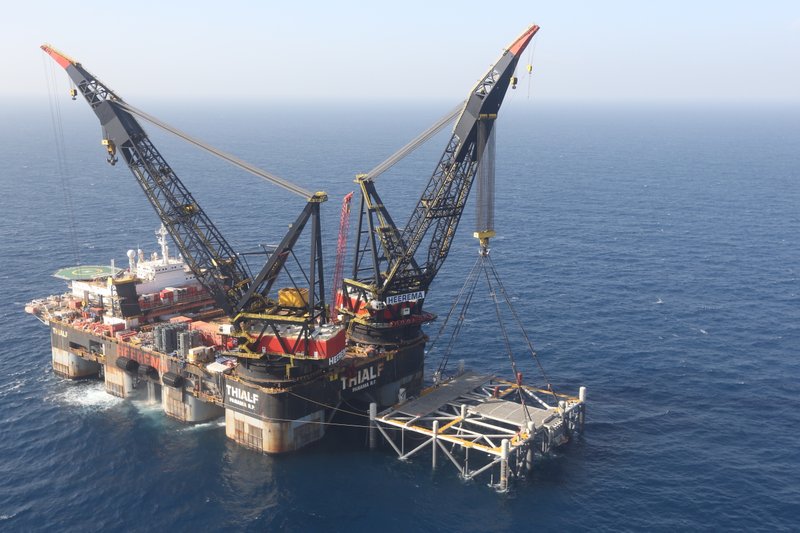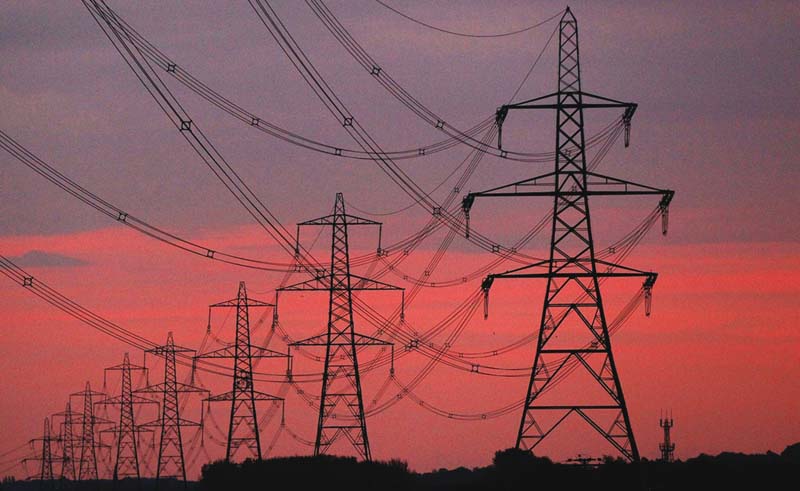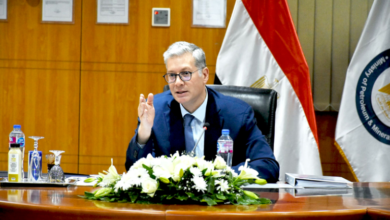A recent government hike in electricity prices means Egyptians will soon be paying more to switch on a lamp or an air conditioner; a rise which will likely mean higher prices for many other goods and services.
The price increase has been split in two phases, according to the Ministry of Electricity and Energy: A 7.5 percent hike already took place in November, and the second 7.5 percent raise is scheduled to take place in January 2013.
According to the ministry, this price hike will affect almost all the consumers. In order to protect the purchase power of the poorest households, the agricultural field and the lowest category of residential consumers consuming less than 50kWh per month will continue to pay the subsidized prices.
The second category of residential consumers consuming between 51 and 200 kWh per month will see its bill grow by only 5 percent.
All the other categories, along with the industrial and the public sector, will have a 15 percent increase.
Aksam Abu El Ella, undersecretary to the Electricity Minister, says the measure is an absolute necessity. “It had to be implemented because the prices had been frozen since 2008," he told Egypt Independent. "We cannot maintain our price steady while all our expenses increase: Wages, gas supply, new projects.”
According to El Ella, more than 90 percent of Egyptians currently benefit from subsidized prices. He added that electricity subsidies would not disappear in the future, but that another raise might occur in 2014.
It remains to be seen whether these increases match the increase in the ministry’s expenses. A 2004 proposal planned for a 5 percent annual increase in the electricity fees. However, the price hikes were frozen in 2008 because of the global economic crisis. Another increase was studied in 2010, but the government retracted it.
According to Abu El Ella, the measure is justified by the dire financial problems the ministry and its major holding, the Egyptian Electricity Holding Company (EEHC), are currently facing. The EEHC is heavily indebted to the main public natural gas supplier, the Egyptian Petroleum and Gas Company (EGPC). Around 80 percent of the Egypt's electricity plants run on natural gas.
According to the ministry, cash shortages caused the crippling electricity shortages witnessed last summer. The EEHC was unable to pay for the increased gas supply needed during the peak electricity consumption during the summer.
According to Abu El Ella, the ministry has been generating a LE16 billion deficit each year. The residential sector is responsible for around LE12 billion of this deficit while small and medium sized enterprises (SMEs) and the public sector account for the rest of it.
The industrial sector will not benefit anymore from subsidized price and will buy its electricity at the market price. According to those figures, the electricity subsidies represent 14 percent of the total LE111 billion energy subsidies.
A controversial raise
Many observers have raised criticism over the timing and the target of this increase as the Egyptian economy faces its most serious crisis in decades. Growing unemployment, stagnating wages and significant inflation have already curtailed the purchase power of many families.
Ninety-nine percent of citizens have electricity in their homes. The Egyptian Center for Economic and Social Rights (ECESR) has recently filed a lawsuit against President Mohamed Morsy, the Prime Minister Hesham Qandil and the Minister of Electricity and Energy before the Court of Administrative Justice asking for the electricity price raise to be repealed.
Nadeem Mansour, executive director of the ECESR, called the measure “a major challenge to the poor and the middle class." He said it would deal a blow to all categories of Egyptians.
“Those who consume less than 50kWh per month are families who live in one room with just one lamp and no electric appliance," he said.
Mansour said any households owning a fridge or a washing machine would automatically fall into the categories that will bear the price increase. According to the Ministry of Electricity, people consuming less than 50kWh per month represent 25 percent of the consumers. Around 40 percent of the Egyptian population lives under the poverty line, but most of them do use both or one of these appliances. The price increase is therefore very likely to touch the poor as well.
“We believe this kind of law is illegal," said Mansour. “It violates the president’s promise to keep the purchase power of the poor untouched. This kind of decision should not be taken without the consent of an elected parliament.”
Electricity price raises are usually implemented in the winter when electricity consumption is at its lowest. Air conditioning is the major source of all residential electricity consumption. Mansour added that the government had other alternatives for raising money than increasing the tax burden of the low and middle class.
“The government is just following the same policies as under Mubarak," he said. "Why do they not increase the contributions of the major companies and investors?”
Minister of Electricity Saad Mahmoud Balbaa said in an interview last September the raise would specifically target the “greatest consumers” and not the “average” ones. However, 75 percent of the consumers will be affected by this measure and the top 33 percent of consumers will have the same 15 percent increase, according to the ministry’s figures.
Prior to the price raise, electricity prices were progressive, so the consumers who use the least benefit from a smaller subvention rate than the high ones. There are six categories of prices in total. Before the raise, the price of the highest category was almost 10 times the price of the lowest category. However, increasing electricity consumption in the country should lead to the raising of the levels of the consumption brackets in order to maintain the same average level of subsidizing.
Skyrocketing residential consumption
According to the ministry’s figures, the average Egyptian consumes around 37 percent more electricity than 10 years ago. Residential consumption increased by 40 percent in four years and now makes up 41 percent of the total consumption, while the industry accounts for 32 percent only.
To face that growing demand, the EEHC faces high pressure to insure gas inflow and to increase production capacities. Investments worth more than LE120 billion have been planned for the 2010-2017 period. Abu El Ella said four new plants are planned to open before next summer.
However, the main issue facing the EEHC remains the limited gas supply. In addition to liquidity problems, there is a shortage of natural gas in the country. The government has recently announced it is considering importing gas from Algeria or from the Gulf to face its growing appetite.
According to El Ella, renewable energies cannot constitute a reliable source of power for the future. Wind and solar farms do not produce a steady electricity flow and technologies for storing electricity are not developed enough yet. For instance, the consumption peak in Egypt takes place between 8 and 10 pm, as people use both lighting and air conditioning. However, solar farms can provide energy during the day only.
El Ella explained that the government is also looking at the possibility of exchanging electricity with Saudi Arabia, which has peak consumption during the day and consumes less in the evening. But this project would need at least three to four years to be carried out, he said.




